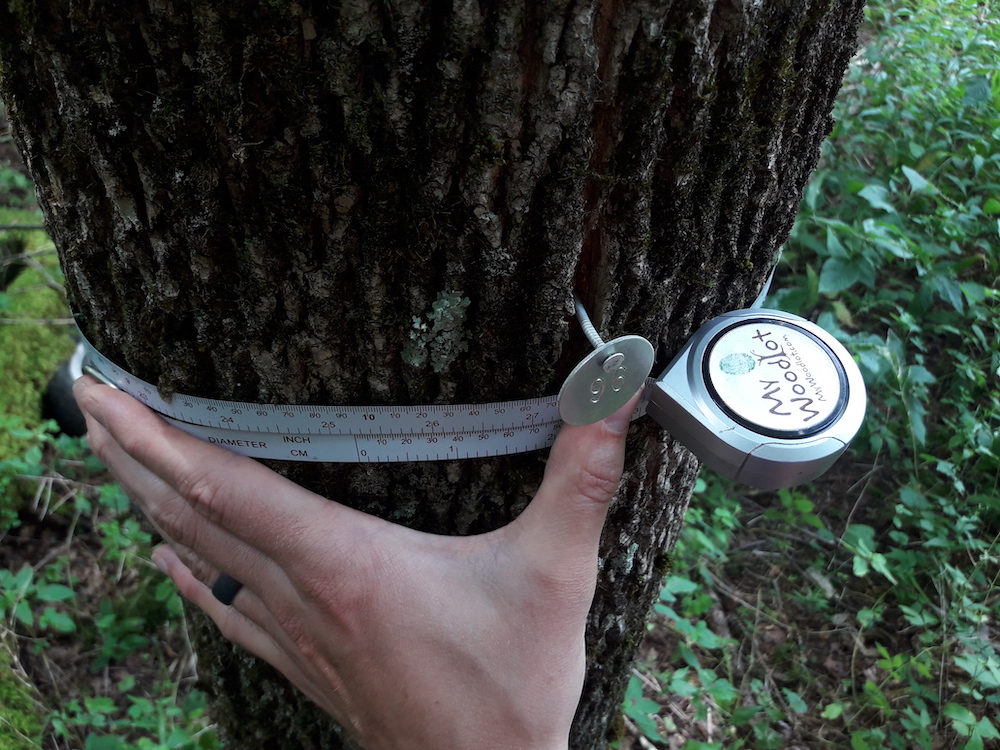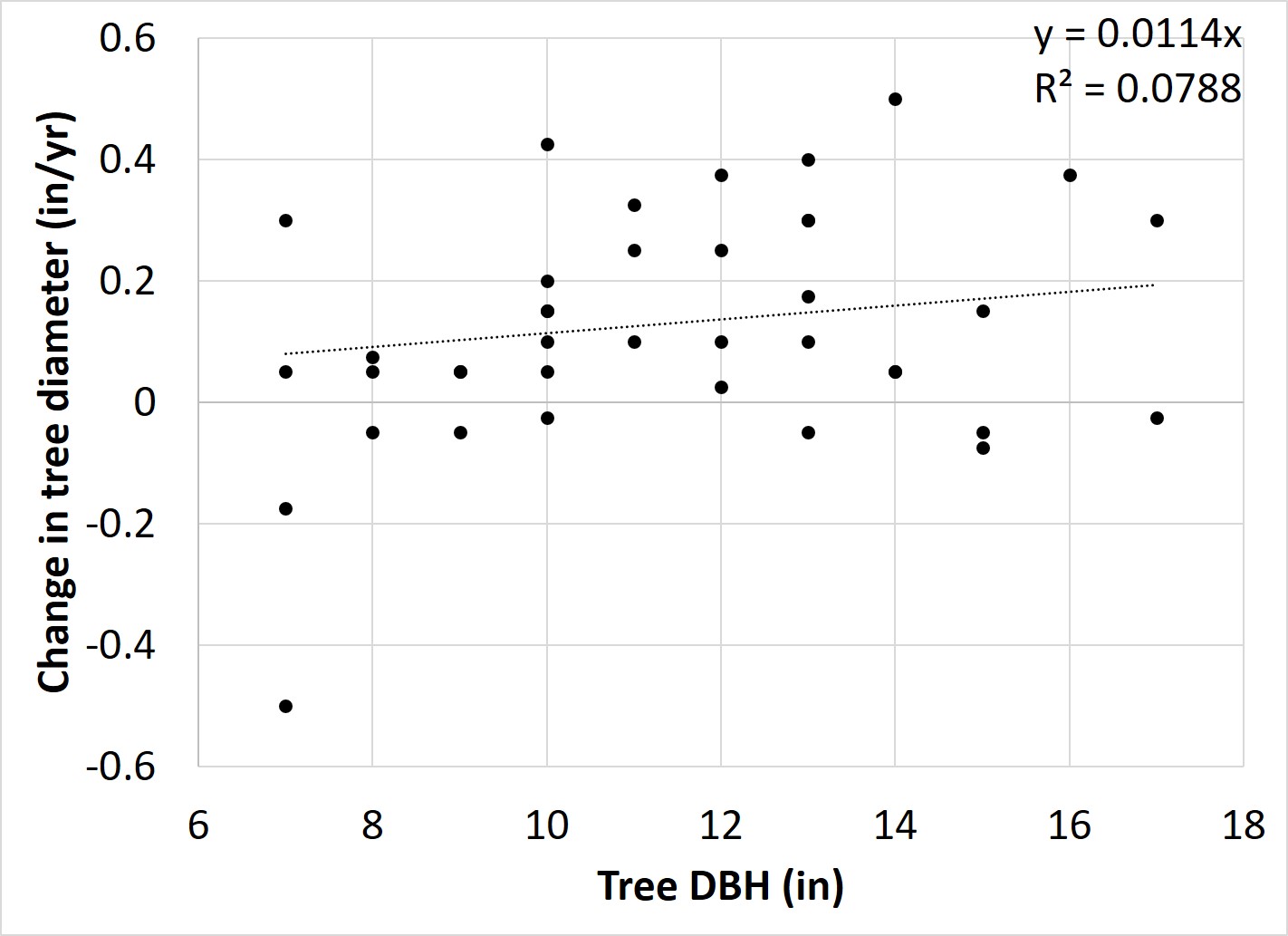Each year after trees have fully leafed out, I help to collect data for a citizen science project called MaMA (Monitoring and Managing Ash). Data collection involves assessing ash tree health and looking for definite signs of the Emerald Ash Borer (EAB), an invasive insect pest that kills ash trees. Fortunately, after 6 years of monitoring, there is still no sign of EAB at Lennox Model Forest in Delhi, NY. I wondered how much these trees had grown during this period.
In 2021, I started measuring tree diameter at breast height (DBH) in addition to the tree health indicators and EAB sign. The dataset is small (about 40 trees), short in duration (Aug. 2021 to Jun. 2023, measured 3 times), and represents just one site (Lennox Model Forest). Nonetheless, the dataset satisfied my curiosity about how much an ash tree can grow (in diameter) in a few years’ time.

Measuring DBH.
When I plotted the data, I was pleased to learn that the individual tree DBH had increased by 0.116 inches on average.

Average annual change in tree diameter (inches) for 42 ash trees at Lennox Model Forest.
As the figure above shows, there is random error involved in my measurements. For example, tree diameter shouldn’t shrink over time, but the DBH change from 2021 to 2023 was negative for 9 trees. This represents any inconsistencies in my measurements from year to year (i.e., random error). However, 30 of the trees do show a positive change, indicating they have grown a little bit over the last 22 months.
I was curious if all the trees grew at the same rate, regardless of their original (2021) diameter. The figure below shows that larger trees grew slightly faster.

Average annual change in tree diameter (inches) versus original (2021) tree diameter.
I consulted U.S. Forest Service General Technical Report Number NE-649, Individual-Tree Diameter Growth Model for the Northeastern United States, and found that white ash trees in that study had an average annual diameter growth of 0.140 inches.
You can do this too! Get yourself a diameter tape (D-tape) and re-measure your trees each year. It’s just plain fun.
Related MyWoodlot Resources:





